All of the 'Mad Max' Movies, Ranked
Is 'Furiosa' better than 'The Road Warrior?' Is 'Beyond Thunderdome' a misfire or underrated? So many things to fight over. WITNESS ME!
Welcome to The #Content Report, a newsletter by Vince Mancini. I’ve been writing about movies, culture, and food since the aughts. Now I’m delivering it straight to you, with none of the autoplay videos, takeover ads, or chumboxes of the ad-ruined internet. Support my work and help me bring back the cool internet by subscribing, sharing, commenting, and keeping it real.
—
Back in the Uproxx days (and to a lesser extent, the FilmDrunk days), we used to write listicles as a way to juice pageviews. This was a way to exploit whatever defect it is in the human psyche that makes us more inclined to click on and read something that has numbers next to it rather than a big block of words (even when the thing with numbers on it may have just as many if not more words than the big block of words).
Just sticking a number in the headline seemed to make it automaticaly more clickable, regardless of what the story was even about. “The top five reasons my wife left me! Seven reasons I’m eating this sandwich right now! 13 times my dad kicked your dad’s ass!”
Switching to a subscription model here on Substack in many ways liberates me from the tyranny of worrying about pageview numbers. With a subscription model, what matters is people who like what you write and want to come back for it, not how many random folks’ brains spazzed out and made them click a headline that had “27” in it for whatever reason. It allows me to aspire to “meaningful writing” rather than “hey, fuckface! shiny thing over here!” (Not that I’m above baiting you fuckfaces with all things shiny).
Still, is that reason enough to deny numbered lists their validity as a format? Even when I was required by market forces to pimp numbers, I like to think I used them merely to package #content you might actually want to read. And hey, I have the same lizard brain that appreciates the illusion of order in a chaotic universe as everyone else. We don’t have to think rankings are objective or definitive in order to discuss and fight about them. And isn’t that what it’s all about anyway? Creating an excuse for conversations?
Maybe that’s a lot of boring inside baseball talk and I should just do the damned thing (“throat clearing,” we used to call it in writing workshop) . The opening of Furiosa, as well as all the previous Mad Max movies being available on Max felt like a golden opportunity to bring back the listicle, and maybe to do it because we wanted to rather than because we had to.
So here goes, my definitive ranking of the Mad Max movie universe.
—
The Mad Max franchise began in 1979, as a scruffy indie called Mad Max, directed by a guy (George Miller) who was a medical doctor in Sydney when he came up with the idea. Let that be a lesson to you, aspiring artists: study something you can use to support your art, like 12 years of medical school. You can daydream about the stories you’ll tell all you want when you’re performing heart surgery or whatever.
Dr. Miller found some collaborators who knew more about making movies than he did (producer Byron Kennedy, who was an amateur filmmaker, and screenwriter James McAusland, who had been a journalist, just like Herman Mankiewicz and Ben Hecht), and together they created a sort of schlocky, midnight exploitation-ish movie about roving biker gangs and the souped up police who chased them. (James McAusland is actually American, despite “James Mc Aus Land” sounding like the perfect euphemism for an average Australian man). Mad Max, their modest little film (with a budget of $400,000 Australian dolleridoos) went on to become the Guiness-recognized most profitable film of all time, for more than 20 years before it was upset by the Blair Witch Project. (And not counting Deep Throat, whose actual numbers will always remain obscure on account of being partly controlled by the mafia).
That film, starring a then-unknown 22-year-old Mel Gibson, went on to spawn four sequels, all fairly distinct from each other, culminating in Furiosa, which opened last week, and was supposedly disappointing from a financial perspective (though it’s still too early to make these sorts of judgements definitively). Which raises the obvious questions: but which one is the best? Which of them should you watch first?
Ah, who am I kidding, this is The #Content Report, not Consumer Reports. We’re here to fight about art, not make informed financial decisions. (Trade some crypto, bet your life savings on blackjack, feed your apes some slurp juice, what the hell do I care? As long as you keep subscribing).
5. Mad Max (1979)
Order of Release: 1.
Setting: A near-future, dystopian-ish pre-apocalypse. Chronologically the first of the series.
Notable Character Names: Toecutter. The Night Rider. Cundalini. Sprog. Mudguts. Clunk.
It’s a little shocking to go back to the first movie in the franchise that would one day go on to become so ornate and maximalist and see how relatively straightforward it is. Certainly Mad Max has its dystopian elements, like the chief of police who looks suspiciously like the daddy at a leather bar and evil biker gangs who dress like vikings and roam the landscape committing rapes (my favorite image is the chief of police casually watering his house plants while dressed in leather pants, gold chains, and a scarf, smoking a big cigar). Of course, the S&M-themed costumes are basically canon in the Mad Max franchise, along with repurposed American football gear.
Where future installments would begin with more involved story setting, with video montage and narrators describing catastrophic wars, ecological calamity, and humanity going feral, Mad Max begins simply with “A few years from now.”
Mad Max feels similar in many ways to The Warriors, which came out the same year, in that neither feel entirely set in our reality nor entirely fantastical. They’re more like camped-up takes on street gangs in New York City or biker gangs in Australia. Many elements ride the line between dystopian and merely Australian, like officer Max Rockatansky’s son being named “Sprog.”
Gibson plays Rockatansky, an officer in a police outfit called the Main Patrol Force, who kills a speedfreak outlaw biker named Nightrider during a pursuit. Nightrider’s gang, led by Toecutter (a wonderful combination of brutish and theatrical, embodied beautifully by actual Shakespearian Hugh Keays-Byrne), come to town to raise hell and get revenge. At some point Mad Max (who is never referred to as such) gets disillusioned with the police force and considers quitting altogether. But the Chief Daddy of the S&M Police Force bribes him back with a “V8 Interceptor,” the last of the V8s. “People need a hero,” the chief says.
It’s unclear what “the people” would really know about Max offing bikers in the middle of nowhere, but I think they were going for that Western vibe. Max and the gangs basically go tit for tat on road murders for the rest of the film, with George Miller reusing multiple times a stylized shot of guy’s eyes popping out of his skull just before he dies in a fiery wreck.
Even though the movie feels cheap and home-made by modern standards, the stunts still feel dangerous and real, adding to the “feral society” vibe and giving Mad Max a bit of backyard wrestling video feel. The filmmakers strike you as some blokes who were really having a go.
I don’t rank Mad Max at the bottom because it’s a bad movie; the grosses alone should tell you that they’d really hit upon something. The film was clearly heavily inspired by the oil shortages of the 1970s, and seeing how feral and desperate people would get with each other when forced to compete for scarce resources. It doesn’t develop much beyond that in the first film, especially compared to where the concept would eventually go, but the fact that you can’t quite tell how fantastical or futuristic it was really supposed to be give it an eerie quality that you don’t really get with any of the others. It feels now more like a proof of concept for a great franchise than a great movie in its own right.
4. Mad Max Beyond Thunderdome (1985)
Order of Release: 3.
Setting: Post-the-post apocalypse of Mad Max: The Road Warrior.
Notable Character Names: MasterBlaster. Aunty Entity. Pig Killer. Ironbar. Blackfinger. Scrooloose.
I went into this rewatch with the vague notion that Mad Max Thunderdome was the acknowledged worst and sort of the red-headed stepchild of the franchise. I quickly realized that I’d also possibly never watched the whole thing from start to finish before, and also that it isn’t that bad. (Fun Fact: Roger Ebert named it his seventh favorite film of 1985).
Thunderdome has the most things I hate about it of any movie in the franchise, but there’s also plenty to love, and it has maybe some of the franchise’s most memorable lines (Who runs Bartertown, two men enter, face the wheel, etc).
Tonally, Beyond Thunderdome feels like an awkward fit with the rest of the franchise. I think a lot of that comes from the fact that Mad Max and The Road Warrior feel very much like seventies movies (dour, horny, meandering, sort of cheap) and Mad Max Beyond Thunderdome feels very much like an eighties movie (coke addled, simultaneously underdeveloped and overproduced, with unearned bombast). My notebook from my rewatch just said “Return of the Jedi-ass movie.”
There’s a child-like goofiness, a Home Alone-esque sense of the kiddos outsmarting the adults to Beyond Thunderdome that I kind of hate, but which is possibly unfair in a franchise that’s all about the orphaned children of a society that killed itself through hubris, greed, and stupidity. That sense, of the orphans recreating society based on half-remembered memories of the world before, is arguably the best part of the Mad Max franchise, and it’s articulated arguably the most extensively in Thunderdome. It’s just that the execution is a bit on-the-nose.
Who runs Bartertown?
Most of the film, or at least the best parts, are set in the Wasteland citadel of Bartertown, which is ruled by Aunty Entity, played by Tina Turner. Max ends up in Bartertown after the Gyro Pilot, whom we met in Road Warrior, swoops down on Max’s camel caravan in his plane and steals the entire menagerie with the help of his son. Max ends up tracking them to Bartertown (with the help of his pet monkey, who guided Max by… you know what, you don’t want to know), where the bulk of the story takes place.
That the Gyro Captain (played by the marvelous Bruce Spence, who would’ve made an incredible comedic star in the silent film era) would return in the first scene, and that he’d have his son as a sidekick, and that he and Max would still be playing tricks on each other in this installment, seems very fan servicey, and not very Mad Max. Yet the whole scene only takes two or three minutes to play out and it gets us to Bartertown.
Bartertown is a dystopian utopia run by Aunty Entity, played by Tina Turner, whose acting ranges from very good to sort of just doing her stage act as a movie character. She’s fun to look at, at least. Aunty Entity figures out that Max is good at killing people and not dying, and enlists his help to kill her troublesome rival, MasterBlaster. MasterBlaster a little person (Master) who rides on top of a giant (Blaster) and controls the pig farm underneath Bartertown, which produces the shit-derived energy on which the entire thing runs. I’m pretty sure MasterBlaster must’ve been the inspiration for Krang in Ninja Turtles.
Max fights Blaster in Thunderdome (TWO MEN ENTER! ONE MAN LEAVES!) but declines to kill him, and ends up having to spin the Wheel of Justice. It lands on “Gulag” and Max is sent off to die in the Wasteland. Instead, he runs into a gang of kids who were marooned in a desert oasis after a plane crash and have developed a sort of cargo cult based around the captain, who went off to get help and never returned.
They confuse Max for the captain because of his grey wingtips hairstyle (which may or may not have gone on to inspire Tony Sirico as Paulie Walnuts in The Sopranos). They end up teaming up for a climactic raid on Bartertown, which doesn’t make a ton of narrative sense but is certainly loud. (I’ve come to realize that in order for me to enjoy a big chase sequence, I need to know why it’s happening and where the characters are trying to get to, which is a big part of the reason why I hated The Batman. The climactic chase in Thunderdome mostly fails on both of those metrics).
Beyond Thunderdome has a lot of great ideas in it even if it doesn’t quite come together as a whole movie. I described Fury Road and Furiosa as having simplistic plots so that you could hear the stories the production design is trying to tell. Beyond Thunderdome has similarly fascinating production design but also a plot that kind of shouts over them half the time. Hey, it was the eighties.
3. Mad Max 2: The Road Warrior (1981)
Order of Release: 2.
Setting: Immediately post-apocalypse.
Notable Character Names: Lord Humungus. Papagallo. Feral Kid. Toadie. The Gyro Captain. Wez.
Probably the most impressive thing about the Mad Max franchise as a whole is that George Miller and his various collaborators have been able to maintain and achieve a coherent creative vision across decades and with wildly different time and budget constraints.
That being said, Mad Max 2 (aka The Road Warrior, the title it was given in the US and Canada, where no one had really seen Mad Max) feels distinctly like the movie where Miller found his stride and established the blueprint from which everything later would spring.
The Road Warrior may also better reflect George Miller’s original vision, considering the way he’s described making Mad Max. As he told the New York Times in 1982:
'Making 'Mad Max' was a very unhappy experience for me,'' Mr. Miller said. ''I had absolutely no control over the final product, it was just grabbed out of my hands. But, to my surprise, it succeeded everywhere but in the United States and Canada. There was strong pressure to make a sequel, and I felt we could do a better job with a second movie.”
Whether Mad Max even was a post-apoclyptic story was left sort of ambiguous in the original. Road Warrior was more explicit, beginning right with the opening crawl, which elaborates on Mad Max almost to the point of recontextualizing it, almost a retcon.
After the narrator describes an apocalyptic war between “two great warrior tribes” — “Their world crumbled. The cities exploded. A whirlwind of looting, a firestorm of fear. Men began to feed on men…” the following words play over scenes from Mad Max:
On the roads it was a white line nightmare. Only those mobile enough to scavenge, brutal enough to pillage would survive. The gangs took over the highways, ready to wage war for a tank of juice. And in this maelstrom of decay, ordinary men were battered and smashed... men like Max... the warrior Max. In the roar of an engine, he lost everything... and became a shell of a man... a burnt-out, desolate man, a man haunted by the demons of his past, a man who wandered out into the wasteland. And it was here, in this blighted place, that he learned to live again…
The Road Warrior says explicitly, of the ambiguous context in Mad Max, that this is all taking place in a ruined landscape post-calamity, where everyone has been left to fight over the scraps. The next three films all take place with that basic understanding. Also, bold move to basically put a trailer for the film at the beginning of the film, outlining all the themes. Hey, why leave it up to a marketing company? (That narrator is Harold Baigent, by the way, even though he sounds exactly like Ray Winstone).
The Road Warrior is a more dour vision than the weird, 80s cheeriness of Thunderdome, but offers a much more nuanced, fully developed picture of the setting than Mad Max (Road Warrior’s $4 million budget was something like ten times that of Mad Max). Max roams the ruined landscape in his V8 interceptor, now sans family (Toecutter’s gang having killed them) but with a dog companion (a blue heeler, just like Bluey from Bluey). He takes a Gyro Captain prisoner in one of the first scenes. The Gyro Captain leads him to a refinery, whose people capture Max, but with whom Max makes a deal to retrieve an 18-wheeler they want to use to pull their big fuel tank.
Basically, there’s a peaceful village with a white hat leader (Pappagallo, played by Michael Preston), being terrorized by an evil gang (led by Lord Humungus, a deformed bodybuilder in a metal hockey mask) and Max ends up reluctantly teaming up with the good guys for his own ends. It’s the same basic blueprint of so many westerns. The other big bad guy is Wez, a flamboyant evil biker in a feather boa with a beautiful twink sidekick named Golden Youth (Jerry O’Sullivan). Weirdly I only recently realized that Wez was played by Vernon Wells, who also plays Bennett in Commando, possibly the best 80s bad guy in the best 80s action movie of all time. As Americans, all the American football and hockey gear seems normal, but it’s interesting to imagine how it looked to Australians who don’t really have those sports.
Furiosa vs. Road Warrior was an intense debate I had with myself in making this list, and the truth is that they’re basically impossible to compare. One thing I noticed in my rewatch is how funny The Road Warrior actually is. It’s almost certainly the funniest Mad Max movie, and between Wez, the Feral Kid, the Gyro Captain, Humungus, and the Amazon Lady (Warrior Woman, played by Virginia Hey), it originated arguably more memorable characters than Furiosa (most of whose characters are carryovers from Fury Road).
The main areas in which Furiosa surpasses The Road Warrior are in general complexity (understandable on a $168 million budget vs. $4 million) and in the vernacular of the Wasteland. Fury Road and Furiosa really develop the idea that language itself is evolving as the Earth dies, with so many words malapropped and pidginized.
That being said, The Road Warrior is probably the tighter film, with more punch and less fat. I also miss the S&M/leather daddy sexuality that was such a big part of the earlier films. Sure, we get the guy who rubs his nipples in Fury Road/Furiosa (the People Eater, played by John Howard) and a leader (Immortan Joe) with a steering wheel attached to his crotch, but I do miss the pain piggies and twink sidekicks of Road Warrior. I guess they’re both faily heavy with sexual overtones, but the later ones are missing some of the queerness and androgyny.
To-may-to, to-mah-toe, they’re both great.
2. Furiosa: A Mad Max Saga (2024)
Order of Release: 5.
Setting: Pre-the post-post-post-apocalypse of Fury Road, which is to say some time in between Beyond Thunderdome and Fury Road.
Notable Character Names: Dementus. The History Man. Toe Jam. Vulture. Smeg. Blackthumb. Maggot Lady.
I don’t think Furiosa is a perfect movie (my review), and I even agree to a certain extent with the criticism that Anya Taylor-Joy might’ve been miscast. When all the trades called it a flop in the first week of release, I was trying to imagine how the rightwing rags would spin it into a “go woke, go broke” narrative that’s the only story they know how to tell these days. I feel naive for not even predicting the “chick protagonist, the only one without Max!” angle that now seems obvious. What a fool I was! Needless to say, I didn’t actually miss Max all that much.
Furiosa’s closest analogue in the series is probably Mad Max Beyond Thunderdome. Thunderdome came out four years after the hugely successful The Road Warrior, with more than double its budget. Furiosa came out nine years after the hugely successful Fury Road, with a comparable budget. It’s a testament to Furiosa that it surpasses Thunderdome by virtually every measure.
Furiosa is much more of a tonal fit with its predecessor and even manages to elaborate and expand upon the mythology in some ways (Thunderdome feels very much like some movie executives got involved and started demanding things like stunt casting and more kid stuff, though I have no evidence that this actually happened).
Furiosa is the only prequel in the series, giving us a classic origin story for Imperator Furiosa, who Charlize Theron played in Fury Road. I don’t love a prequel in theory and I think we’re all pretty sick of origin stories in general, but the beauty of all the best Mad Max movies (Road Warrior through Furiosa) is that they all take fairly simplistic, traditional plots and let the production design do most of the heavy lifting.
And as with Fury Road, the production design in Furiosa is truly glorious. One of my favorite aspects of it is the way it plays with the pidginized language of the Wasteland, where people crave “guzzeline” and Dementus shouts “Ladies and gentlemens!” It’s storytelling that inspires world building inside your head as detailed as what’s actually on the screen. Exposition is always better when you just let the audience dream it up themselves without the characters laying it out explicity. Chris Hemsworth is Oscar-worthy as Dementus, and his over-the-top fake nose is a big, goofy swing that works shockingly well.
At 140 minutes, Furiosa is by far the longest of the series, and it did drag a bit for me near the end. That being said, the last 20 minutes were possibly the strongest of the film, and the coda, in which Hemsworth gets to chew scenery while Anya Taylor-Joy mostly reacts to him, elaborates on the psyche of Mad Max’s “bad guys” in ways that none of the other films do. In such a morally complex universe, it makes sense to color in some shades of grey, which Furiosa does beautifully.
1. Fury Road (2015)
Order of Release: 4.
Setting: Post (x4)-apocalypse.
Notable Character Names: Nux. Slit. Scrotus. Immortan Joe. Rictus Erectus. Dag. Cheeto the Fragile. The People Eater. Corpus Collossus. Doof.
Quite simply one of the best action movies of the last 20 years. Even for those of us who loved The Road Warrior and Thunderdome, I don’t think anyone expected what Fury Road pulled off. It was like George Miller said “hey, I heard you like biplanes” and then showed up in an F-14. It’s hard to think of many other movies that languished in development hell for the better part of 30 years and then came out, with a completely new cast and an entirely different cultural context, and succeeded on basically every level.
If Furiosa is a fairly simple revenge movie, Fury Road is an arguably even simpler chase movie. Furiosa turns turncoat and absconds with the War Rig, containing all of Immortan Joe’s wives. Max gets captured by the War Boys and turned into a blood bag. The War Boys are Joe’s cancer-riddled platoon of kamikaze warriors, with an elaborate state religion based on V8s, glory in battle, and an ultimate reward in Valhalla.
Fury Road’s enduring utility as a source of memes (from “uh-uh, that’s bait” to “WITNESS ME!”) speaks to its memorability, far and away the most important rubric of criticism. Good movies and bad movies, hits and flops, really the categories that matter with the benefit of time are memorable movies and the rest of them. I can’t count the number of times in the past nine years that “WHAT A LOVELY DAY” has rattled around my head and made my pulse quicken. Such a gorgeous punk song of a movie.
Fury Road has so many memorable lines and characters, some of which flew right over my head until the second or third watch. Until I watched it with subtitles on, I didn’t even catch Nux (Nicholas Hoult) muttering, “I should be walking with the Immorta, mcfeasting with the heroes of all time.”
That’s such a good line! An entire world of exposition in just a few words, the best quality of the entire franchise. As I wrote of “Immortan Joe” in my Furiosa review:
“Immortan Joe” is itself a perfect nugget of Mad Max vernacular. This florid, grandiloquent and slightly absurd self-designated title that opens with faux Romanistic qualifiers and instantly peters out into the most mundane of informal first names, presumably through stupidity and lack of imagination. All hail our glorious Dirt Father, Omnipitus Steve!
Furiosa and Fury Road both get heavily into the politics and social structure of the Wasteland, which was only ever really hinted at in previous installments. That’s what great sequels do, they imagine where their stories would go and how the characters would evolve, rather than just trying to replay the hits of the original.
Where Furiosa is more of an institutional view, with the leaders of Gastown, Bullet Town, and The Citadel (as well as Dementus) all jockeying for primacy, Fury Road’s is a ground-level view, told from the points of view of Mad Max, the drifter-turned-blood bag, Nux, the prodigal War Boy, Furiosa, the traitorus imperator, and The Wives, Immortan Joe’s chosen few, whose positions range from desperation to get free of his control to wondering whether being a concubine to a powerful man is the best life they can hope for in this environment.
That’s kind of the big conflict in all of the Mad Max movies: how much can you hope for? When is it time to dream big and when is it time to cut bait? It’s a universal impulse, and it’s what elevates the franchise above all the schlocky, B-movie trappings and reference points. Fury Road is a fantastic B-movie that allows for an entire second layer of interpretation; my favorite kind of movie. Aside from the fact that it looks great and the stunts are mind-blowing. When you watch it, it feels like scores of people must’ve died trying to make it. Mad Max and Fury Road are about as different as two movies could be, but that feeling of genuine danger is the common thread.
Tom Hardy and Charlize Theron reportedly feuded on the set (allegedly because Hardy was always late to set and Theron got annoyed with his unprofessionalism), but it’s almost miraculous the degree to which Fury Road feels perfectly cast basically from top to bottom. I could watch Tom Hardy paint a house, and our finest grunt-mumbler is an easy fit as a character who doesn’t talk much while being hung upside down or strapped to the front of a speeding marauder hot rod. Casting a beautiful, glamorous actress like Charlize Theron as a tough girl action hero is something that a lot of movies attempt but few pull off. She’s a perfect mix of tough/vulnerable as Furiosa, and has a genuine physicality that’s all but non-existent in comparable actresses (think Angelina’s comical running in Salt). The casting is a lot like the stunts: it’s fantastical and stylized almost to an absurd degree, but none of it feels fake or forced.
Nicholas Hoult (then maybe best known as the little kid from the movie adaptation of About A Boy) has gone on to reveal hidden layers since (the comedic chops he showed in The Great didn’t get nearly the acclaim he deserved) but it took something of a visionary to imagine how perfect he’d be as a War Boy. Ditto Riley Keough, whom Miller gave a meaty role as an Immortan Wife before her unforgettable turns in American Honey or Under the Silver Lake (for those of us who actually saw those, anyway).
Suffice it to say, Fury Road at number one was the biggest gimme of this list. It’s basically a perfect movie. And the Mad Max franchise, five movies with no skips, ranging from low-budget grindhouse gore to $150 million blockbuster fantasy, is possibly the best franchise we have.

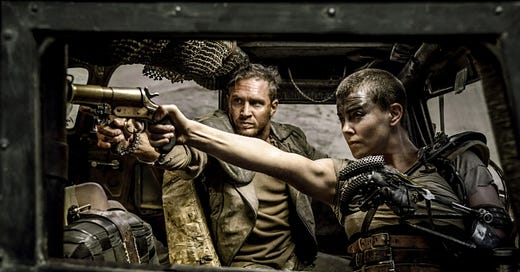


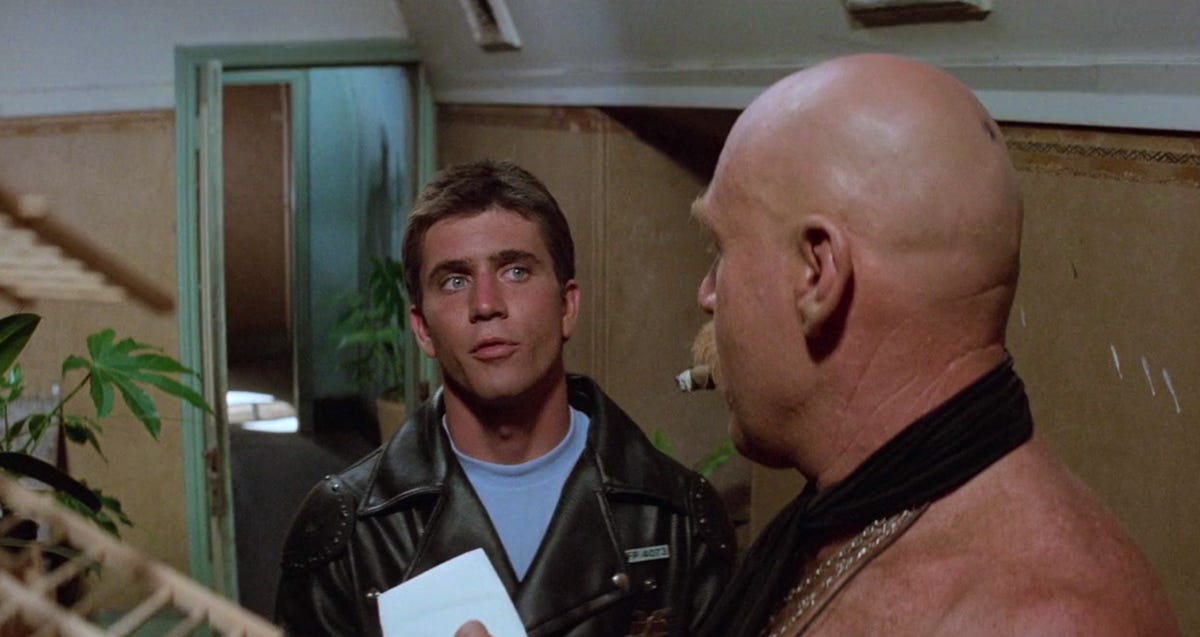
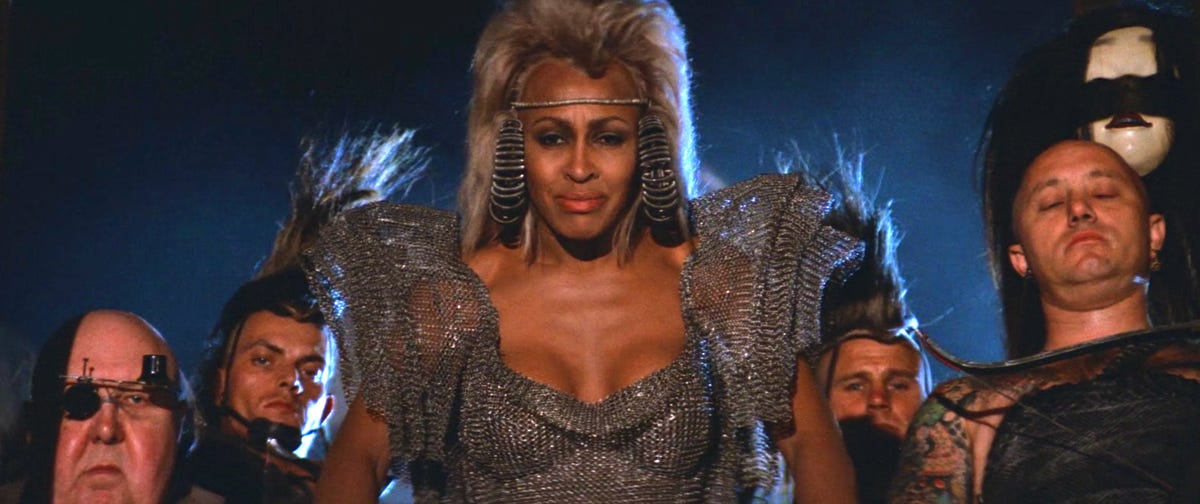
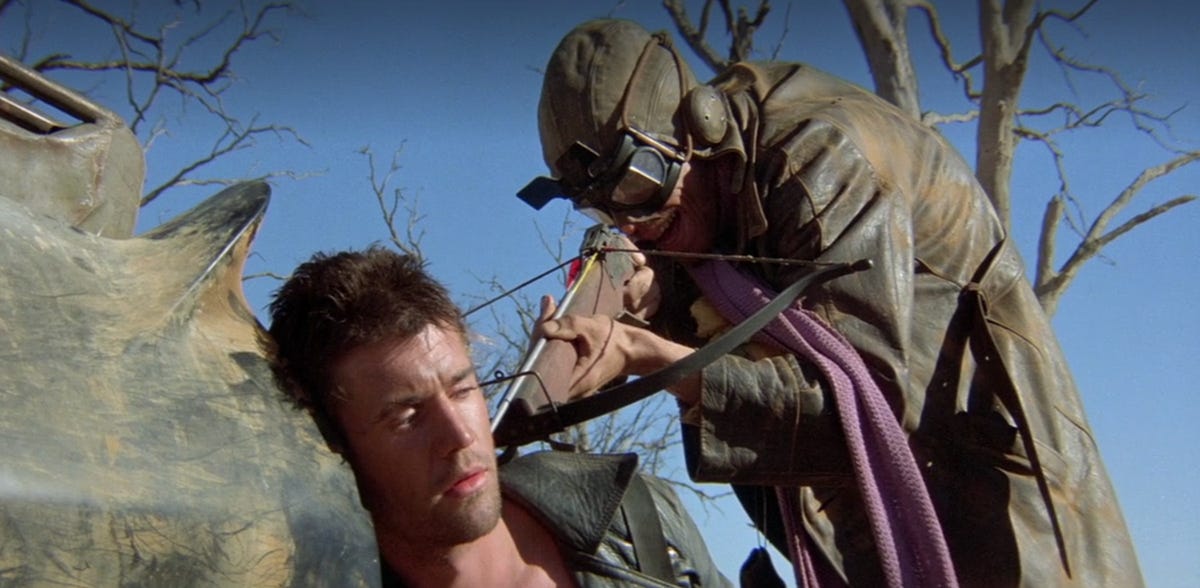
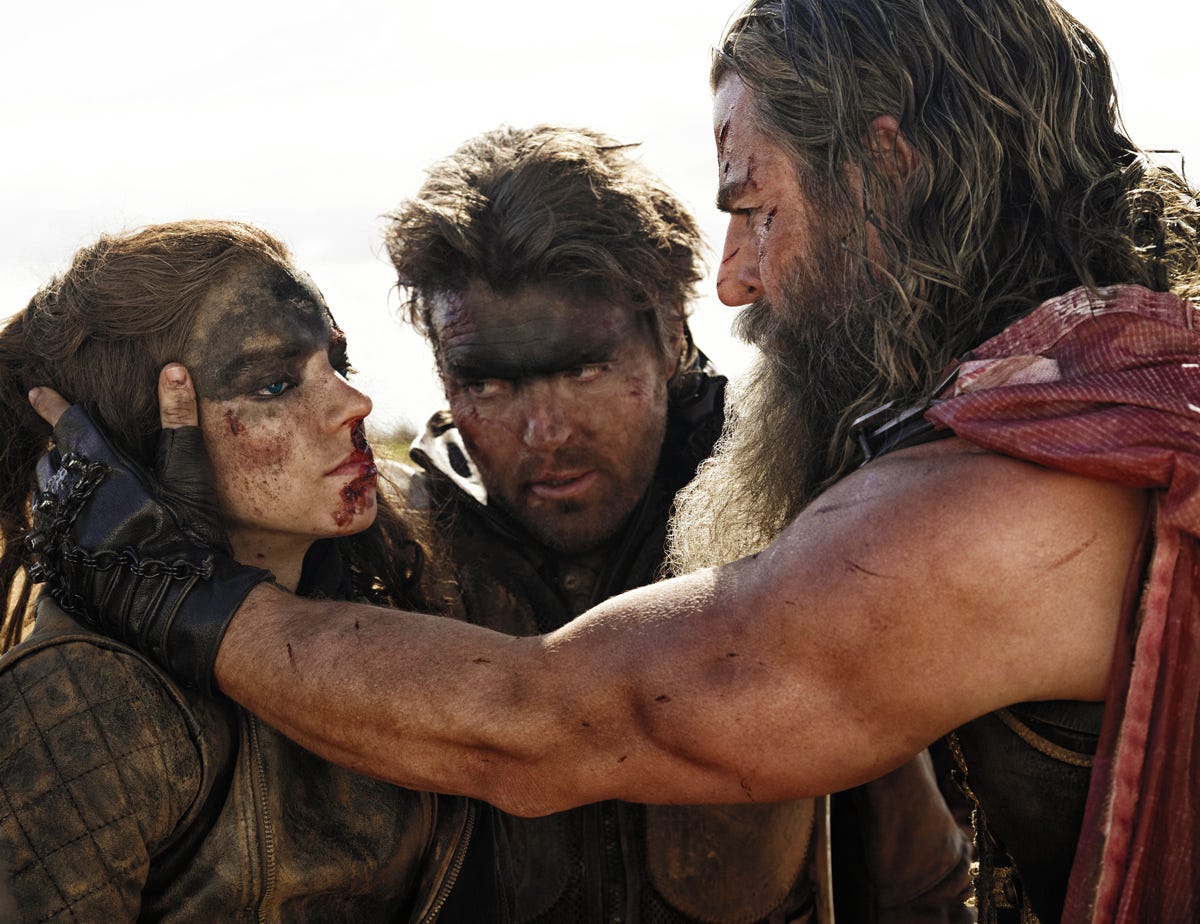

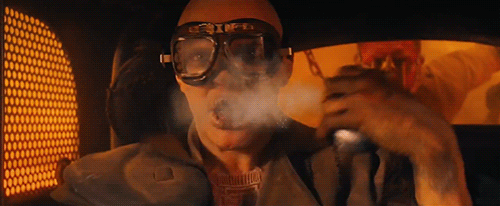
Vince, I know you’re not a pro wrestling guy but there is not a single pop culture item that has had a bigger impact on pro wrestling than Mad Max.
One of the most famous tag teams ever was the Road Warriors who debuted in black leather and chains (before eventually moving to spiked shoulder pads), there was a Thunderdome cage match in WCW, there was a tag team called the Master Blasters, Sycho Sid Vicious debuted in Memphis as Lord Humongous wearing the hockey mask, and WCW also did a “spin the wheel, make the deal” match.
It’s a marriage that makes sense when you think about it
Vince, your explanation of listicles reminded me of this tweet: https://x.com/roryisconfused/status/1795770265525473408?s=46&t=5gCBRLC5E0cR3wE_VphRRw